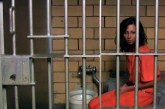By Bita Behpoor
LOS ANGELES – With new Metro projects underway and the pandemic winding down, the future looks bright for Los Angeles’s public transit system. Some predictions indicate that it could become a great alternative to driving vehicles in LA traffic and rising gas costs. However, with the poor conditions of the current public transit system, low ridership and a lack of open commerce in the stations, there is reason to believe that without these inherent problems being fixed, mistakes will be repeated and the billions of tax-payer dollars being used to fund these future projects may go to waste.
Although the public transit system has its own pre-existing problems, the pandemic amplified these issues and caused a major drop in ridership. When Metro slashed its bus and rail services in 2020 in response to COVID-19, the wait times at bus stops and stations extended, a component that decreased ridership.
Staffing and operator shortages led to cuts of bus schedules and rail service, keeping riders waiting longer times and discouraging them from using public transit. This was recently made apparent in February of this year, when LA Metro temporarily reduced its bus and train services.
KTLA reported that LA Metro officials said, “Metro staff shortages have been especially acute in recent months. Although we are seeing progress in our hiring efforts, the recent COVID-19 spike combined with restoration of service hours in September 2021 to pre-pandemic levels has stretched our operators to their limits.”
According to Metropolitan Transportation Authority, violent crimes on the LA Metro systems rose by 36% in 2021, and other violent crimes such as aggravated assault, rape and homicide also rose for the second year in a row. LA Times also reported that some of the homeless population loitering by the Metro stations contributed to rising cases of harassment and violence towards riders.
“In 2021, for example, there were about five crimes per million boardings on Los Angeles Metro, up compared with 3.82 crimes per million boardings in 2019,” reported Jill Cowen of the New York Times. “The number of crimes reported, however, decreased by about 11.6 percent.”
Even now, Metro is still recovering from this blow, with total ridership being only 70-75% of pre-pandemic levels. Compared to large transit hub cities such as New York and San Francisco, Los Angeles’s car culture and reliance on vehicles as a primary mode of transportation prevent ridership from increasing, especially since the Metro systems are unreliable and safety on transit is a massive concern.
LA Metro is putting more concentration into starting projects that expand the metro system and increase ridership, including the Sepulveda Transit Corridor Project to connect the San Fernando Valley and the Westside and the Purple Line Extension to extend the D line terminus to the Westside.
These projects are definitely a step in the right direction to improve the reach and accessibility of LA’s public transit, however, the levels of bureaucracy involved and previous project failures make it difficult to believe that the other underlying problems with the metro system will be solved when these projects are finally implemented.
Looking at LA Metro’s 28 by 2028 plan, which consists of a staff plan to complete 28 transportation projects by the year 2028, was also specified as a part of Measure M, a tax measure to partially fund LA Metro’s transportation projects to expand and improve public transit for Los Angeles residents. However, with the drop in ridership and safety concerns as well as the transportation design flaws that still have not been fixed, all of these projects will fail to be completed by the allotted amount of time.
So, with all these problems still not being solved, how is it feasible for LA Metro to deliver on promises of expansion when improvements to the current system have not been made? Expanding the metro system is not going to solve all the problems that discourage people from taking buses and rails in the first place.
Although issues such as homelessness and overall crime may be out of Metro’s scope, there are still measures that can be taken to improve the overall conditions of LA’s public transit systems.
Following the examples that cities such as New York City and Tokyo set in making their public transit stations and centers hubs of commerce would bring in more people and riders, which would increase ridership. Funding should also be allocated to the regular cleaning of subways and possible positioning of uniformed workers on the rails and buses to create a perception of safety among riders and encourage them to use LA Metro systems.
Without improving the current conditions, the projects LA Metro is putting into action will only repeat these mistakes and make riding public transit just as unreliable as before.




